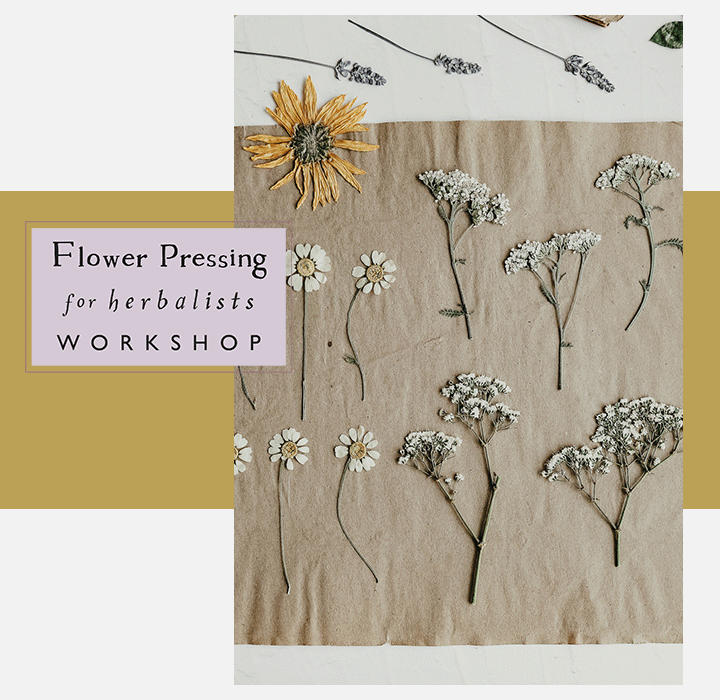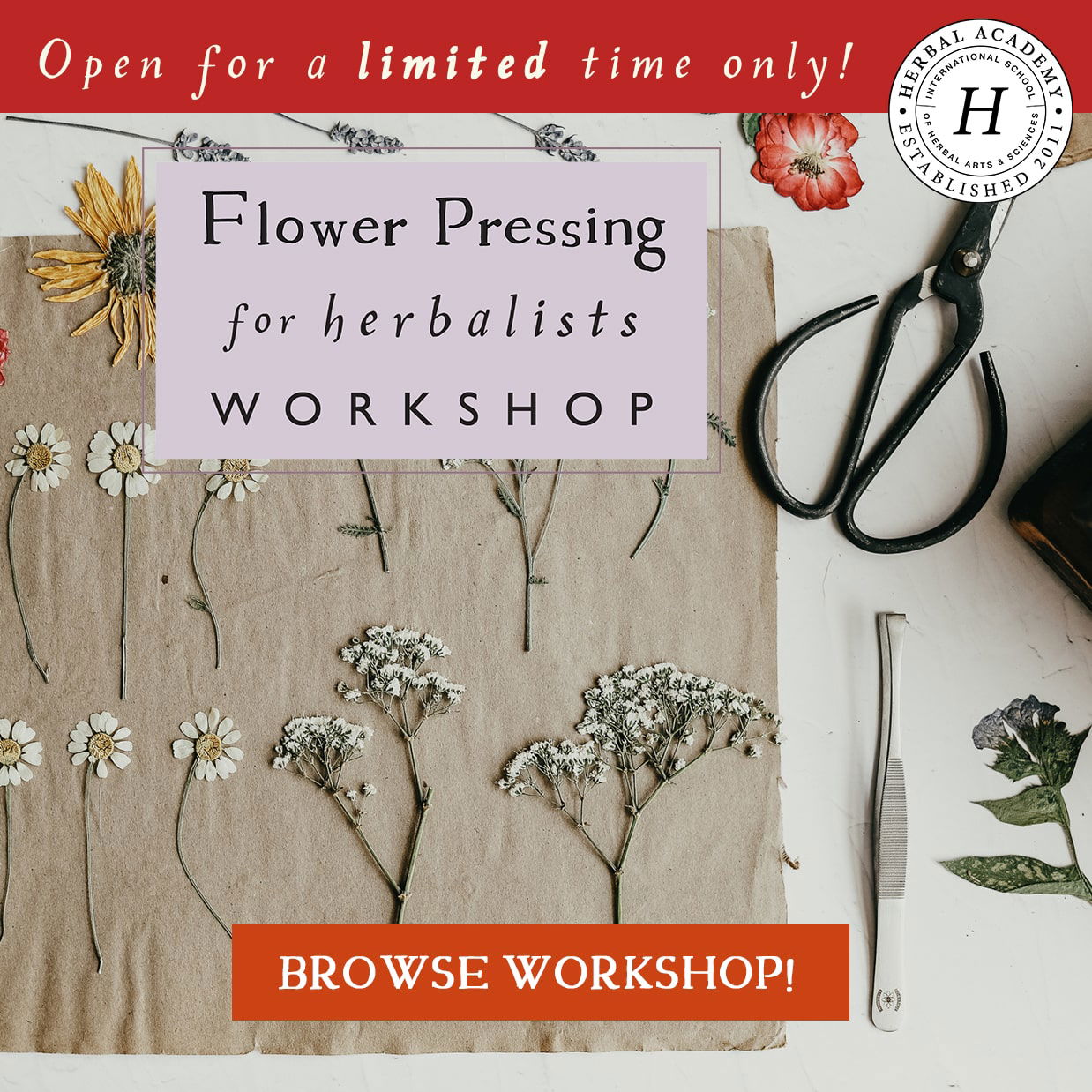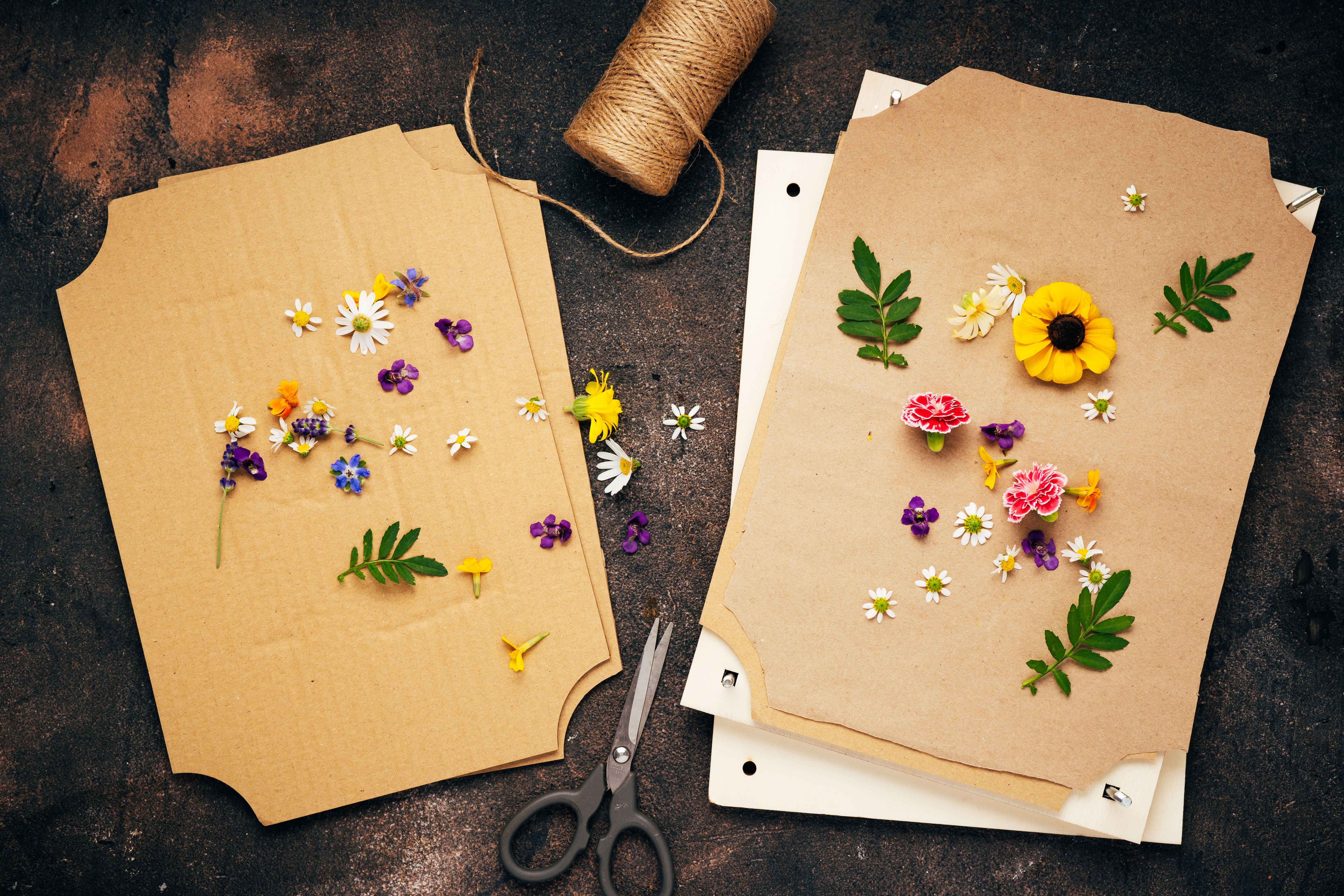Master the Art of Flower Pressing for Herbalists: A Step-by-Step Guide by Herbal Academy
Introduction
Welcome to the enchanting world of flower pressing, where the delicate beauty of blooms is preserved for a multitude of creative and medicinal purposes. Our exclusive workshop, Master the Art of Flower Pressing for Herbalists, offered by the esteemed Herbal Academy, provides a comprehensive guide for herbalists and nature enthusiasts alike. In this hands-on experience, you'll learn how to transform fresh flowers into lasting botanical treasures, perfect for incorporating into herbal remedies or creating stunning art pieces. Flower pressing not only preserves the aesthetic charm of plants but also retains their medicinal properties, making it a valuable skill for any herbalist. Our expert instructors, including renowned herbalist Hannah Lasorsa, will share their extensive knowledge and tips, ensuring you master both traditional and modern techniques. Whether you're a seasoned herbalist or a curious beginner, this workshop offers invaluable insights and practical skills to enhance your herbalist journey.
Learn how to press flowers, leaves, and other plant parts to preserve their color for years to come. Enroll Now
Selecting the Perfect Flowers
Choosing the right flowers is a crucial step in the art of flower pressing. The flowers you select will impact the color, texture, and overall beauty of your pressed creations, making it important to be discerning in your choices. When selecting flowers, consider the following criteria for optimal results:
- Freshness: Freshly picked flowers are ideal for pressing as they retain their vibrant colors and structural integrity. Avoid flowers that are wilted or past their prime.
- Size: Smaller and medium-sized flowers, like purple violet flowers, tend to press more evenly and dry faster. Larger blooms can be pressed, but may require more attention and care.
- Color: Bright and bold colors, such as the sunny hues of calendula flowers, tend to retain their vibrancy better through the pressing process. Pale flowers can also be beautiful but may lose some color during drying.
To help you identify suitable flowers for pressing, here are some tips and tricks:
- Choose flowers at their peak: Look for flowers that have just fully bloomed. These will have the best color and form.
- Consider the shape and structure: Flat-faced flowers like daisies or pansies are easier to press and will lay flat. Tubular and complex flowers might need to be dissected before pressing.
- Experiment with different types: Don't be afraid to try pressing herb sprigs, leaves, and even delicate stems. This can add variety and interest to your pressed flower creations.
By carefully selecting your flowers, you can ensure that your pressed botanicals will be both beautiful and long-lasting, perfect for a variety of herbalist projects and creative pursuits.
Traditional Techniques vs Modern Methods
Flower pressing has been a cherished art form for centuries, evolving from simple traditional techniques to more sophisticated modern methods. Both approaches have their unique charm and benefits, and combining them can yield the most stunning results.
Traditional Techniques and Tools
In traditional flower pressing, simplicity reigns supreme. The basic tools include:
- Wooden Presses: Often made of wood and equipped with four steel screws, these presses allow for even pressure distribution.
- Absorbent Paper: Layers of corrugated cardboard and blotting paper are used to absorb moisture from the flowers.
- Heavy Books: For those without a formal press, placing flowers between pages of thick books is a time-honored method.
Traditional techniques emphasize patience and natural drying, usually taking 2-4 weeks for flowers to fully press and dry.
Modern Methods and Their Benefits
Modern flower pressing methods have introduced new technologies and materials that expedite and enhance the process.
- Microwave Pressing: Utilizing a microwave-safe flower press, you can achieve results in minutes. This method maintains vibrant colors and reduces pressing time.
- Silica Gel: Placing flowers in silica gel helps preserve their three-dimensional shape and vivid hues, offering a different aesthetic.
- Specialized Kits: Modern kits often include printable charts and detailed plant-pressing instructions, making the process more accessible for beginners.
These techniques allow for greater flexibility and faster results, making them ideal for seasonal craft projects and other creative pursuits.
Combining Both Methods
For the best results, consider integrating both traditional and modern methods:
- Initial Drying: Start with traditional pressing to flatten the flowers.
- Final Preservation: Use modern techniques like silica gel to enhance color and texture.
By blending these approaches, you can create truly unique and lasting botanical artworks, perfect for herbalist use and beyond.
The Process of Pressing Flowers
Pressing flowers is a gratifying and meditative process that allows herbalists to preserve the beauty and medicinal properties of botanicals. Follow these step-by-step instructions to master the art of flower pressing:
Step-by-Step Process
- Gather Your Materials: You'll need a flower press or heavy books, absorbent paper (like blotting paper or parchment paper), and corrugated cardboard for layering.
- Select and Prepare Flowers: Choose fresh blooms with vibrant colors, such as sunny calendula flowers or purple violet flowers. Trim the stems and remove any excess leaves.
- Arrange on Paper: Place your flowers between two sheets of absorbent paper. Arrange them flat to avoid overlapping petals and leaves.
- Layer and Press: Create a sandwich of four alternating layers of paper and flowers, and place them in the press. Tighten the screws or apply weight evenly if using books.
- Drying Time: Allow the press to sit in a dry, warm place for 2-4 weeks. Periodically check and replace damp paper for optimal drying.
- Final Touch: Once dried, carefully remove the pressed flowers and store them in a cool, dark place until ready for use.
Important Aspects
To ensure a successful flower pressing experience, pay attention to these key aspects:
- Preparation: Freshness is crucial. Select flowers that are not wilted or damaged. Herb sprigs can also be pressed if they are fresh and vibrant.
- Pressing Time: Patience is essential. Rushing the process can result in mold or incomplete drying.
- Drying: Ensure that the press is kept in a dry, warm environment to facilitate even drying.
Tips for Success
Here are some expert tips to help you achieve beautiful pressed flowers:
- Use Desiccants: To speed up drying, consider using silica gel or another desiccant in the press.
- Change Paper Regularly: Replace damp paper with fresh sheets to avoid mold growth.
- Experiment with Different Flowers: Try pressing a variety of flowers, including golden ginkgo leaves and other botanicals, to create a diverse collection.
The process of pressing flowers not only preserves their beauty but also connects you to the natural world. By following these steps and tips, you can create stunning botanical artworks that capture the essence of each bloom.
Medicinal Properties and Uses of Flowers
Flowers are not only a feast for the eyes but also possess remarkable medicinal properties that have been harnessed for centuries in herbalism. By pressing flowers, you can preserve these benefits and incorporate them into your herbal remedies.
Medicinal Properties of Flowers
Different flowers offer a variety of therapeutic benefits. Here are some notable examples:
| Flower | Medicinal Properties |
|---|---|
| Calendula | Anti-inflammatory, antiseptic, and healing properties. Often used in skin treatments. |
| Violet | Rich in vitamins A and C, with soothing and anti-inflammatory effects. Used for respiratory and skin conditions. |
| Lavender | Calming and relaxing properties. Commonly used for anxiety, sleep disorders, and skin irritations. |
Incorporating Pressed Flowers into Remedies
Pressed flowers retain their medicinal qualities and can be used in various herbal preparations. Here are some ways to incorporate them:
- Infusions and Teas: Dried and pressed flowers like chamomile can be steeped to create soothing teas.
- Topical Applications: Create balms and salves with pressed flowers such as calendula for skin healing.
- Decorative Herbal Remedies: Add pressed flowers to homemade soaps and lotions for both their beauty and benefits.
Popular Flowers in Herbalism
Some flowers are particularly popular among herbalists for their versatile uses:
- Rose: Known for its astringent and anti-inflammatory properties, rose petals are used in skincare and emotional healing.
- Chamomile: Famous for its calming effects, chamomile is used in teas, compresses, and skin treatments.
- St. John's Wort: Used for its antidepressant and anti-inflammatory properties, it is incorporated into oils and tinctures.
By understanding the medicinal properties of these flowers and learning how to press them, you can create beautiful and effective herbal remedies. The art of flower pressing not only preserves their natural beauty but also their therapeutic potential.
Creating a Stunning Pressed Flower Collection
Crafting a stunning pressed flower collection is both a creative and therapeutic pursuit. By arranging your pressed flowers thoughtfully, you can create beautiful and lasting displays that capture the essence of nature.
Ideas and Inspiration for Arranging Pressed Flowers
When it comes to arranging your pressed flowers, the possibilities are endless. Here are some ideas to get you started:
- Botanical Art: Create intricate designs by arranging flowers and leaves into patterns or shapes. Frame these creations to adorn your walls.
- Seasonal Themes: Use flowers that bloom in specific seasons to create themed arrangements. For instance, combine sunny calendula flowers with golden ginkgo leaves for a vibrant autumn display.
- Herbal Journals: Incorporate pressed flowers into the pages of your herbal journal. Document the properties and uses of each flower next to its pressed counterpart.
Displaying and Preserving Your Collection
Once you've arranged your flowers, consider these methods for displaying and preserving them:
- Framed Art: Place your pressed flower arrangements in frames with corrugated cardboard backing to keep them flat and protected.
- Decorative Glass: Sandwich your pressed flowers between two pieces of glass to create elegant, see-through displays that can be hung or placed on shelves.
- Herbal Recipes: Add pressed flowers to herbal recipe cards or labels for an extra touch of beauty and personalization.
Maintaining the Beauty of Pressed Flowers
To ensure your pressed flower collection remains vibrant and beautiful, follow these tips:
- Avoid Direct Sunlight: Display your pressed flowers away from direct sunlight to prevent fading.
- Keep Dry: Ensure your flowers are stored in a dry environment to avoid moisture damage.
- Use Acid-Free Materials: Use acid-free paper and backing materials to prevent discoloration over time.
- Regular Cleaning: Gently dust your framed or glass displays to keep them looking fresh and vibrant.
By following these tips and letting your creativity flow, you can build a pressed flower collection that is not only beautiful but also a reflection of your connection with nature.
Connecting with Nature in a Serene Field Setting
One of the most enriching aspects of our herbalists workshop is the opportunity to connect with nature in a peaceful and serene environment. Immersing yourself in such a setting not only enhances your creative pursuits but also fosters a deeper appreciation for the natural world.
The Workshop Setting
Our workshop takes place in a picturesque field setting, designed to be both inspiring and tranquil. Surrounded by vibrant wildflowers, gentle breezes, and the soothing sounds of nature, you'll find the perfect backdrop for learning and creating. This serene environment allows participants to fully engage with the pressing techniques and the delicate botanicals we will be working with. Imagine the sun casting a warm glow over fields of purple violet flowers and sunny calendula flowers, providing the ideal atmosphere for a hands-on experience. The natural beauty of the setting will inspire your creativity and help you form a lasting connection with the flowers you press.
Benefits of the Serene Setting
Learning in a field setting offers numerous benefits:
- Mental Clarity: The calm and quiet environment helps to clear the mind, making it easier to focus on the detailed plant-pressing instructions.
- Enhanced Creativity: Being surrounded by nature's beauty can spark creative ideas and innovative approaches to flower pressing.
- Stress Reduction: Spending time in nature has been shown to reduce stress and promote overall well-being, making the learning process more enjoyable.
Dive into our Smart Rings, Herbal Courses, Yoga, Brain Training, and enriching Science for Kids and more... Your fitness evolution starts here!
Additional Activities and Experiences
Beyond the core flower pressing activities, our workshop offers additional experiences to enrich your time in the field:
- Guided Nature Walks: Explore the surrounding area with our expert guides, learning about the various plants and their medicinal properties.
- Herbal Tea Sessions: Enjoy freshly brewed herbal teas prepared from the very plants you'll be working with, enhancing your sensory experience.
- Interactive Discussions: Participate in discussions about herbalism, the benefits of various botanicals, and the history of plant presses, providing a well-rounded educational experience.
Embrace this opportunity to connect with nature, learn new skills, and create beautiful, lasting botanical works in a setting that nurtures both mind and spirit.


